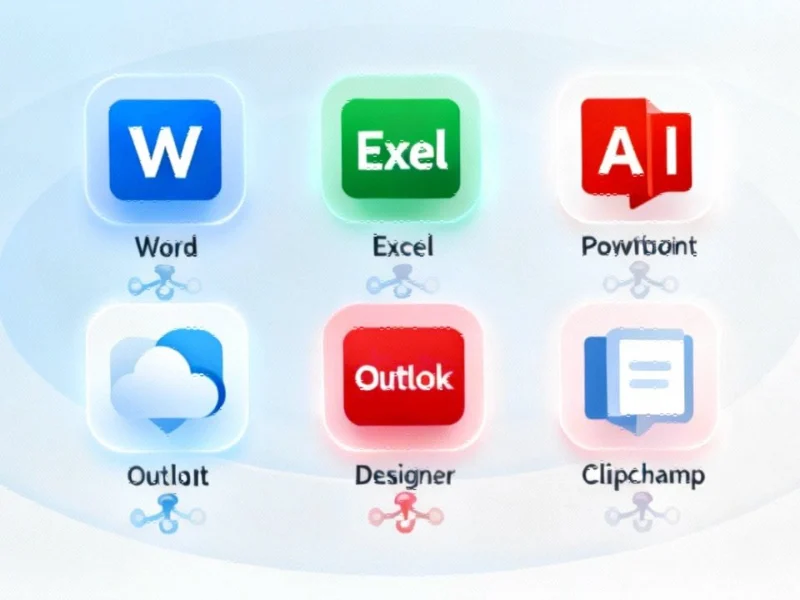Note: Featured image is for illustrative purposes only and does not represent any specific product, service, or entity mentioned in this article.
WhatsApp’s New Anti-Spam Initiative
Meta-owned WhatsApp is implementing a groundbreaking approach to combat spam by testing monthly message caps for accounts that recipients consistently ignore. This strategic move represents a significant evolution in how digital platforms are addressing the balance between communication freedom and user protection. According to reports, the trial will limit how many messages accounts can send without receiving replies from recipients, with the company experimenting with various threshold levels to effectively target high-volume senders and spammers while minimizing impact on regular users.
All message types—whether from individual users or business accounts—will count toward this monthly cap, including multiple unread messages sent to the same recipient. The system incorporates a reset mechanism where replied messages are removed from the monthly tally, creating a dynamic threshold that adapts to actual engagement patterns. Accounts approaching the limit will receive warnings, providing an opportunity to adjust their communication behavior before restrictions take effect.
Targeting the Right Users
WhatsApp has emphasized that typical users are unlikely to encounter these limits during normal usage. The company’s internal data suggests that most individual conversations naturally involve reciprocal exchanges, making sustained one-way communication relatively rare outside of spam or aggressive marketing scenarios. This careful calibration reflects WhatsApp’s understanding of natural communication patterns and its commitment to preserving the platform’s conversational nature.
The timing of this initiative coincides with broader industry developments where human-centric communication approaches are gaining renewed importance. As automated systems become more prevalent, platforms are recognizing the value of authentic engagement over volume-based messaging strategies.
Business and Spammer Implications
This test appears specifically designed to address challenges posed by business accounts and malicious actors. Unlike individual users who typically engage in reciprocal conversations, businesses often send promotional content or automated messages that may not solicit immediate responses. The new cap system creates economic and operational pressure for businesses to refine their messaging strategies toward more engaging, relevant content that recipients actually want to respond to.
The approach aligns with emerging market trends where quality interaction is becoming a key metric for communication platform success. Businesses that adapt to these changing standards will likely see improved customer relationships and higher conversion rates from their messaging efforts.
Meta’s Evolving Anti-Spam Strategy
This message cap trial represents the latest in a series of anti-spam measures from WhatsApp. Last year, the platform introduced functionality allowing users to unsubscribe from business marketing messages, giving recipients greater control over their inboxes. More recently, in August, WhatsApp began notifying users when unknown contacts added them to groups—a common tactic used by spammers and scammers to reach broader audiences.
The company’s aggressive stance against malicious accounts is evidenced by its announcement of banning over 6.8 million accounts linked to scam centers during the first half of 2025. These coordinated efforts demonstrate Meta’s comprehensive approach to platform security and user experience protection.
Broader Industry Context
WhatsApp’s strategy reflects larger shifts in how technology companies are approaching communication management. As platforms mature, there’s increasing recognition that unlimited communication capabilities can be exploited, necessitating more sophisticated governance systems. This evolution parallels related innovations across the digital landscape where quality metrics are supplementing or replacing pure volume measurements.
The implementation of such caps also intersects with recent technology advancements in communication monitoring and management. As platforms gather more sophisticated data about interaction patterns, they can develop increasingly nuanced approaches to maintaining healthy communication ecosystems.
Implementation and Global Rollout
The message cap test will deploy across multiple countries in the coming weeks, allowing WhatsApp to gather diverse data about how the feature performs across different cultural communication norms and user behaviors. This phased approach enables the company to refine thresholds and implementation details before considering a broader rollout.
Industry observers will be watching closely to see how these changes affect market trends in business communication and whether similar approaches emerge from competing platforms. The success or challenges WhatsApp encounters could influence digital communication standards across the industry.
Looking Forward
As detailed in WhatsApp’s comprehensive message limit testing announcement, this initiative represents a thoughtful approach to a complex problem. By focusing on engagement rather than simply message volume, WhatsApp is pushing the industry toward more meaningful digital interactions. The coming months will reveal whether this engagement-based threshold system effectively reduces spam while maintaining the platform’s utility for legitimate communication.
This development signals a maturation in how major communication platforms balance openness with protection, potentially establishing new benchmarks for the entire messaging industry. As users increasingly value their attention and digital wellbeing, such quality-focused features may become expected standards rather than innovative differentiators.
This article aggregates information from publicly available sources. All trademarks and copyrights belong to their respective owners.



